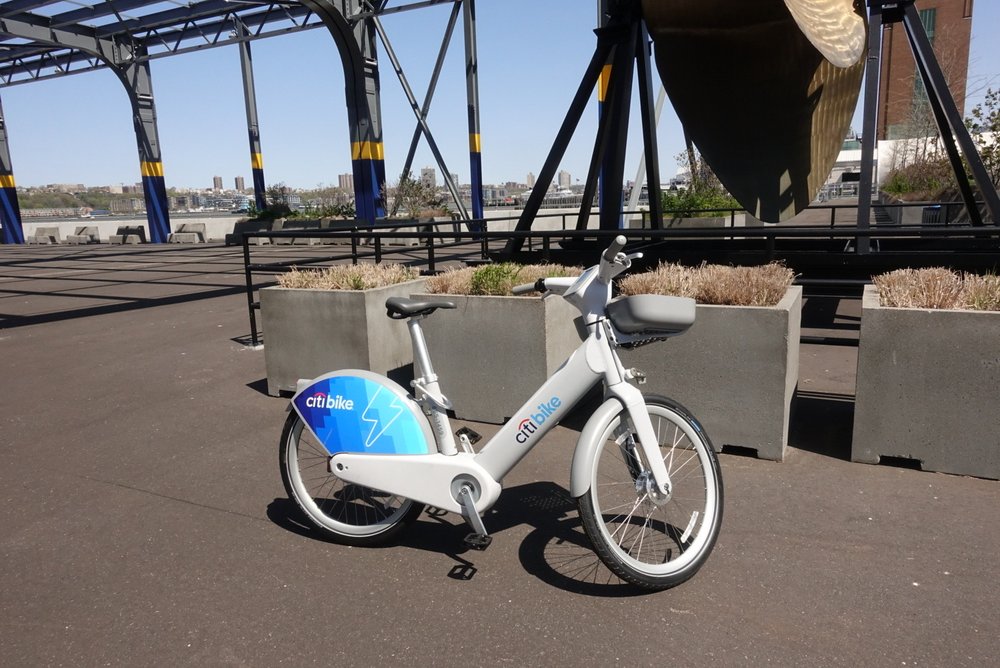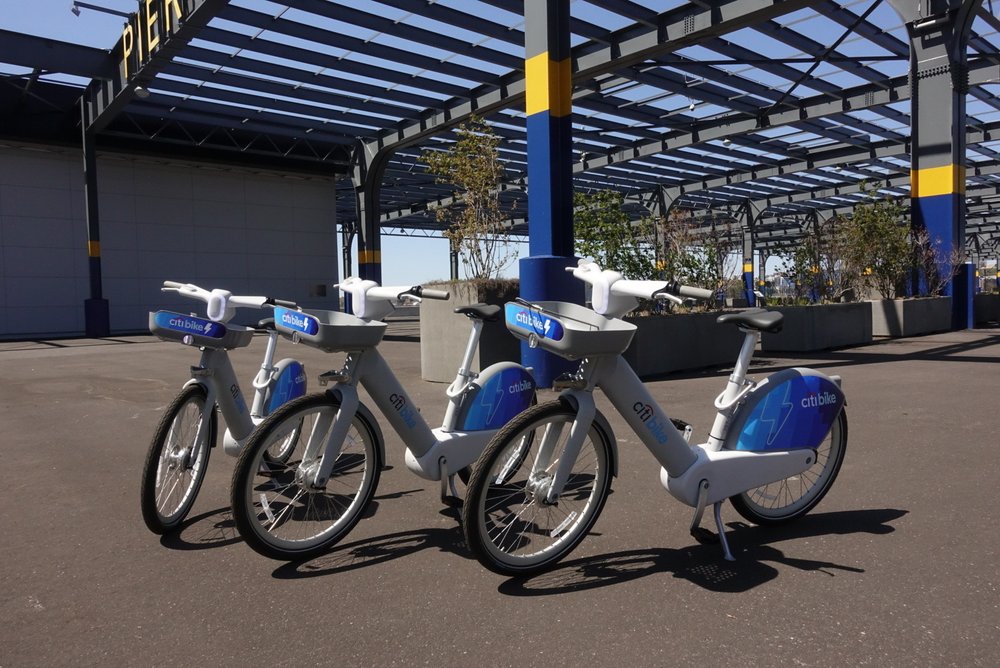Bigger, faster and flashier: New e-bikes join Citi Bike's fleet
April 29, 2022, 6 a.m.
The new models will hit the streets next week.

New York City bike-share members can soon cruise around town on a sleeker, speedier set of wheels – no sweating required.
The new Citi Bike pedal-assist model, set to arrive in docking stations next week, is the latest take on the zippy electric bicycles that have swept the streetscape in recent years. Like its predecessors, a battery-powered motor propels the rider forward with each pedal — a blessing on long trips or over steep bridges.
The main update here is more. The new model is 20 pounds heavier than Citi Bike’s current fleet of e-bikes, with a higher-powered motor that whirs quietly as it pushes you along at a noticeably faster pace – though still within the city-mandated 20 miles-per-hour limit.
Crucially, the battery, now tucked inside the base of the bike, lasts twice as long. The extra juice means the bikes can travel up to 60 miles before the power source is drained and the bikes become unusable – a common source of frustration for any regular e-bike user.
“We know that’s a pain point for folks and we really wanted to solve that with this bike,” said Laura Fox, a general manager of Citi Bike at Lyft, which owns the bike share company. “Double the battery life means less swapping.”
While the company hopes to one day charge the bikes through grid-connected docking stations, they still require an employee to swap out dead batteries by hand.
The new model also has hydraulic brakes, a wider seat range, and phone-sized LCD screen that offers guidance to new riders through a BlueTooth-connected speaker (no Spotify hook-up, yet).
Perhaps the most noticeable difference here is aesthetic. Gone is the once-controversial cobalt blue so closely linked to Citi Bike’s image. The new bikes are an off-white color, with a retroreflective paint job that reflects car headlights at night similar to a street sign.

The rollout comes as Citi Bike prepares to expand deeper into Brooklyn and Queens, amid a pandemic-fueled bike boom that has shown no signs of slowing down. For many bike proponents, electric-assisted two-wheelers are seen as key to the future of urban cycling, helping to reduce barriers to biking such as fatigue and sweating.
Lyft, which purchased the company that owns Citi Bike in 2018, initially promised that the “vast majority” of their fleet would be pedal-assist. They have since revised that number down. By the end of this year, 4,000 of the new e-bikes will join the roughly 5,000 existing pedal-assist bikes – on top of the estimated 25,000 classic bikes, according to a Lyft spokesperson. The new models should be available in spots around the city on May 5.
Representatives for Lyft note that the pedal-assist bikes are particularly popular, getting three times more use than non-motorized counterparts and accounting for more than 60% of trips between boroughs.
But their rollout has been rocky. After arriving on New York streets in 2019, the entire fleet of pedal-assist bikes were pulled from service due to a braking issue that sent some riders flying over the handlebars. The same year, Lyft was forced to temporarily suspend service in San Francisco because of multiple bikes that caught fire.
At a demonstration on Thursday, representatives for Lyft said they were confident that the kinks had been worked out – and that the new pedal-assist model would bring even more users into the system.
"We can get so many more people trying cycling and bringing a more sustainable transportation solution to cities," Fox said. "This bike is designed with that goal in mind."